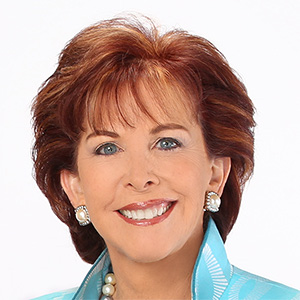No Trump tariffs on oil. Will that mean lower gas prices in California?
Published in Business News
Gasoline prices should drop under $5 a gallon and stay there for awhile.
That’s the analysis of Patrick De Haan, head petroleum analyst at GasBuddy, which tracks prices.
Oil has been the rare glimmer of good economic news in recent days. President Donald Trump exempted oil prices from tariffs, and crude oil prices have been plunging for various reasons.
One is that tariffs slow demand and could help plunge the country near or into a recession.
“Tariffs are causing concerns about slowing global economic activity and recession. This in turn slows demand for oil,” said Gocke Soydemir, Foster Farms endowed professor of business economics at California State University, Stanislaus
California’s average gasoline price is still expected to remain far above the national average. On Monday, the U.S. average for a gallon of regular gasoline was $3.26, according to AAA.
In California, it was $4.96, the highest average in the nation. Hawaii was second at $4.49. Mississippi has the least expensive gasoline at $2.75 a gallon.
The California price is up slightly from a month ago but well below the $5.34 recorded at this time last year.
Other average Monday metro area prices: Sacramento, $5.03; Modesto, $4.89; Merced, $4.93; Fresno, $4.95 and the San Luis Obispo area, $5.15.
How much lower can gas prices go?
“California is becoming more of an outlier and more isolationist because of its stringent policies. It’s notoriously difficult to predict,” said De Haan.
But because of lower demand, anticipated production increases by OPEC+, a group of oil producing nations, and state refineries running at or near capacity, he saw California gasoline prices around $4.50 a gallon.
“If things go well,” De Haan said, “summer’s price could be $4.25 to $4.45. If things don’t go perfectly, the mid-4s.”
In any event, he said, “I don’t really see $5 unless something unforeseen happens.”
Trump exempted oil from the tariffs announced last week, giving no specific reason. The 2020 U.S.-Mexico-Canada trade agreement, which he negotiated during his first term, exempts oil and is still in effect. Canada is by far the biggest source of U.S. petroleum imports, according to the federal Energy Information Administration.
Trump’s action on oil was no surprise to experts.
“When the Trump administration took office, we knew the expectation was energy prices would come down,” said Sanjay Varshney, professor of finance at California State University, Sacramento.
Trump throughout his 2024 campaign promised to encourage more drilling for domestic oil and reduce the U.S. reliance on foreign sources. That’s consistent with his tariff policies, which aim to invigorate U.S. domestic production.
“If energy prices are cheap, it gives us a competitive edge, and energy is plentiful here,” said Varshney.
Trump’s actions have been praised by the oil industry and criticized by environmental activists.
“We welcome President Trump’s decision to exclude oil and natural gas from new tariffs, underscoring the complexity of integrated global energy markets and the importance of America’s role as a net energy exporter,” said Mike Sommers, president and CEO of the American Petroleum Institute in a statement.
But Mahyar Sorour, diirector for Sierra Club Beyond Fossil Fuels Policy, had a different take on Trump’s action.
“Some things stay the same even in chaotic times, and Donald Trump giving a handout to corporate polluters is one of those constants,” Sorour said.
“It’s been proven time and again that renewable energy sources like solar and wind are more reliable, easier on the wallet, and significantly better for public health than gas and oil - and we have ample domestic resources. Once again, Donald Trump is doing everything in his power to kneecap renewable energy and make it less accessible so that families are forced to pay more for dirty, deadly fossil fuels,” she said.
Why are state gas prices so high?
California’s gasoline prices have been much higher than the national average for several reasons.
One is taxes. Its state and local taxes and fees on gasoline have been at or near the highest in the nation.
The state also requires refiners to produce a different blend of gasoline in the summer months for environmental reasons. That product tends to be more expensive to produce.
Refinery shutdowns can also have an outsized impact on gasoline prices in the state.
California’s refineries usually operate at or near full capacity because of strong demand, as well as a lack of interstate pipelines that can send the cleaner product into the state.
“When unplanned refinery outages occur, the lack of CaRFG (California reformulated gasoline) deliveries available from interstate pipelines means replacement supplies of CaRFG come in by marine tanker from out-of-state U.S. refineries or from other countries. It can take several weeks to find and bring replacement motor gasoline from overseas that meets California’s unique specification,” an EIA analysis said.
©2025 McClatchy Washington Bureau. Visit at mcclatchydc.com. Distributed by Tribune Content Agency, LLC.












Comments